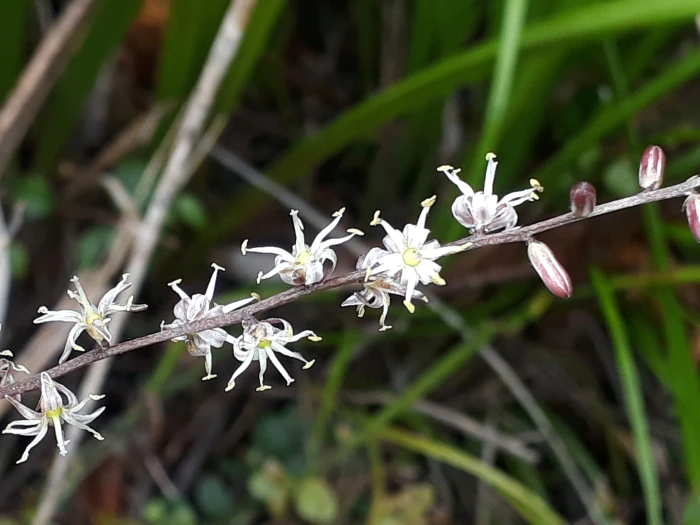Dwarf Cabbage Tree
(Cordyline pumilio)
Dwarf Cabbage Tree (Cordyline pumilio)
/
/

Leon Perrie
CC BY 4.0
Image By:
Leon Perrie
Recorded By:
Copyright:
CC BY 4.0
Copyright Notice:
Photo by: Leon Perrie | License Type: CC BY 4.0 | License URL: http://creativecommons.org/licenses/by/4.0/ | Rights Holder: Leon Perrie | Publisher: iNaturalist | Date Created: 2018-12-29T12:02:56-08:00 |











































Estimated Native Range
Climate Requirements
| • Precipitation | 25" - 105" |
| • High Temp. | 68°F - 77°F |
| • Low Temp. | 34°F - 53°F |
Summary
Cordyline pumilio, commonly known as the dwarf cabbage tree, pygmy cabbage tree, or by its Māori names tī koraha or tī rauriki, is a narrow-leaved monocot shrub native to New Zealand, particularly to rocky, coastal areas and lowland forests. It is a compact plant that typically grows up to 1 meter (3.3 feet) in height, making it the smallest species within the Cordyline genus. The dwarf cabbage tree has long, narrow leaves that give it a grass-like appearance, which can lead to it being mistaken for a grass or sedge. From November to December, it produces a flower spike or panicle that is up to 60 by 30 cm (1.97 by 0.98 ft), very open with slender axes, branched to the second order, and adorned with small white or bluish-white flowers that are subtly fragrant.
The dwarf cabbage tree is valued for its unique form and texture in the garden, offering a grassy aesthetic with the benefits of a shrub. It is well-suited for rock gardens, coastal plantings, and as a specimen in urban gardens where space is limited. This species thrives in full shade to part shade, requiring low to medium amounts of water, making it relatively easy to maintain. It prefers soils with medium drainage and can tolerate a range of soil types, from sandy to loamy. While generally pest-resistant, it can occasionally suffer from root rot if overwatered or planted in poorly drained soils.CC BY-SA 4.0
The dwarf cabbage tree is valued for its unique form and texture in the garden, offering a grassy aesthetic with the benefits of a shrub. It is well-suited for rock gardens, coastal plantings, and as a specimen in urban gardens where space is limited. This species thrives in full shade to part shade, requiring low to medium amounts of water, making it relatively easy to maintain. It prefers soils with medium drainage and can tolerate a range of soil types, from sandy to loamy. While generally pest-resistant, it can occasionally suffer from root rot if overwatered or planted in poorly drained soils.CC BY-SA 4.0
Plant Description
- Plant Type: Shrub
- Height: 2-3 feet
- Width: 2-3 feet
- Growth Rate: Moderate
- Flower Color: White
- Flowering Season: Spring, Summer
- Leaf Retention: Evergreen
Growth Requirements
- Sun: Full Shade, Part Shade
- Water: Low, Medium
- Drainage: Medium
Common Uses
Bee Garden, Bird Garden, Butterfly Garden, Drought Tolerant, Fragrant, Low Maintenance, Potted Plant
Natural Habitat
Rocky, coastal areas and lowland forests of New Zealand
Other Names
Common Names: Pygmy Cabbage Tree , Tī Koraha, Tī Rauriki
Scientific Names: Cordyline pumilio, Charlwoodia angustifolia, Terminalis pumilio
GBIF Accepted Name: Cordyline pumilio Hook.f.